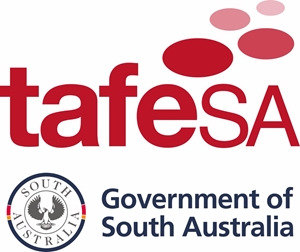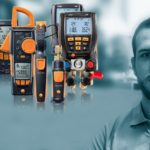TAFE SA is the largest provider of vocational education and training in South Australia, with some of the most up to date facilities in the entire country. With full time staff able to deliver training to more than 80,000 students and across 1,000 courses, it’s an excellent choice for industry professionals and those just starting out.
We sat down with Michael White, senior lecturer for HVAC&R at TAFE SA, to learn more about the school and how it uses testo gauges to deliver students the best possible training.
Can you talk about the students? Who enrols in TAFE refrigeration course?
We usually see students from about 15 through to 50. The younger students are getting started with apprenticeships,. while the older people are looking to upskill. They’ll usually go for Cert 2 and diploma courses to further their knowledge.
Why should students choose to train at TAFE SA instead of an equivalent organisation?
TAFE SA has the best facilities and the best staff. For example of how good the facilities are, the entire building in which we train students is actually a teaching school. This means that all of the different refrigeration and heating systems can be used to teach students. It’s a lot more practical than just reading textbooks.
We’ve also got a number of different training facilities. For example, we have a supermarket training setup that can prove really useful with students. We also have setups for C02, Ammonia and 134 units. Another important thing to note is that we use production equipment – the gear students will actually be using out in the field. In fact, many units are donated to TAFE SA.
Do you use testo instruments in your training?
We use a wide range of testo instruments during our courses, and we’ve recently bought another four sets of gauges from testo including thermohygrometers. We’ll turn these gauges into kits, so our students can easily use them across our facilities.
I also buy testo instruments for myself, recently buying my own thermo hygrometer. I like them in my personal kit – they’re small, the display is clear and easy to read and they’re useful as service tools and teaching tools. I can also pair my testo gauges with the Smart Probes. This is another area where testo excels – my gauges aren’t laden down with unnecessary displays. The equipment is neat, compact and quite robust. They’re certainly state of the art.
Do you see the refrigeration industry transforming from analogue gauges to digital gauges?
Analogue gauges are still a great option – I’m as comfortable using analogue as I am using digital, but there’s no question digital gauges are better in all facets of the industry. Digital gauges are easier to read and app functionality means it’s easy to access the measurements and they’re more accurate.
Get in touch with testo
If you’d like to learn more about the gauges available from testo, as well as the benefits of the Smart Probes apps, reach out to the team today.









 Reduce cooking oil costs while ensuring quality
Reduce cooking oil costs while ensuring quality Expert knowledge on CO2 monitoring
Expert knowledge on CO2 monitoring Refrigeration knowledge - in 3 modules
Refrigeration knowledge - in 3 modules



